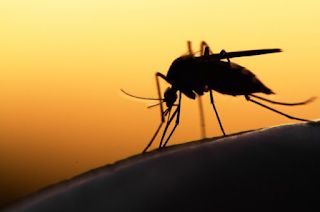Health authorities in Australia have approved a simplified drug combination to treat a form of malaria in children aged two to 16, encouraging other countries to approve the treatment and offering it a new weapon in the battle against the deadly disease.
In her report, which was published by the American newspaper " The New York Times ", the writer Apurva Mandavili said that this drug is a single dose of tafenoquine that the patient takes with the traditional chloroquine treatment. The nonprofit Drug Malaria Project, which helped develop the drug, announced its approval on Monday.
Tafenoquine, made by GlaxoSmithKline, can treat a type of malaria caused by the parasite Plasmodium vivax, most common in South and Southeast Asia, South America and the Horn of Africa.
According to George Jago, executive vice president of the Drugs Malaria Project, this drug is a candidate for approval in 9 countries in addition to the World Health Organization.
Malaria is one of the deadliest infectious diseases. In 2019, 229 million new infections and 558,000 deaths were recorded. The numbers during the "Covid-19" pandemic rose to 627,000 deaths in 2020.
Most deaths have occurred in sub-Saharan Africa, which is home to a type of malaria parasite called Plasmodium falciparum, mostly in children under 5 years of age. In October, the World Health Organization approved the first malaria vaccine produced by GlaxoSmithKline against the parasite Plasmodium falciparum.
The parasite Plasmodium vivax causes up to 5 million cases of malaria annually, and children aged 2 to 6 years are 4 times more likely to contract the disease than adults.
Vomiting and muscle pain
The infection can cause severe symptoms, from fever and chills to vomiting and muscle aches. P. vivax can hide in the liver, leading to relapses months or even years after initial exposure to the parasite. These episodes can lead to severe anemia, permanent brain damage, and death. "This is the hallmark of vivax malaria," Jago explains.
Most treatments, including chloroquine, target the bloodstream to prevent recurrence of infection and associated symptoms. But tafenoquine goes after the sleeper cells in the liver. In combination with chloroquine, tafenoquine can provide what scientists call a "radical therapy."
In July 2018, the US Food and Drug Administration approved a 300-mg dose of tafenoquine as a radical treatment for P. vivax in adults and adolescents 16 years of age and older. Drug regulators in Australia, Brazil, Thailand and Peru have spun along the same lines.
The new pediatric formula is given as one small 50-milligram water-soluble tablet, which is easier for children to take than current tablets developed for adults that are taken over 7 or 14 days.
Getting close to defeating the disease
In a statement, David Reddy, CEO of the Drugs for Malaria Project, said, "Today, we have a tool to put an end to a parasite that relentlessly attacks adults and children. We are one step closer to defeating this disease."
P. falciparum medications can be evaluated quickly, but because P. vivax causes frequent infections, trials require longer follow-up. Jago emphasized that the patient would not develop the disease 6 months after receiving the P. vivax treatments.
The researchers evaluated different doses of the drug, based on weight, for children aged 2 to 15 years who weigh at least 22 pounds, and for 60 children with vivax malaria from 3 sites in Vietnam and 1 in Colombia. All children were given one dose of tafenoquine and doses of chloroquine according to local or national guidelines for the treatment of active blood-stage infection.
The researchers reported that about 62% of children reported some side effect, a percentage similar to that observed in adults and adolescents. None of the side effects were severe, and at 4 months, the treatment was 95% effective in preventing recurrence.
Tags:
health
health benefits
health care
health collapse
health cooperation
health discipline
health effects
health facilities
health harmful



